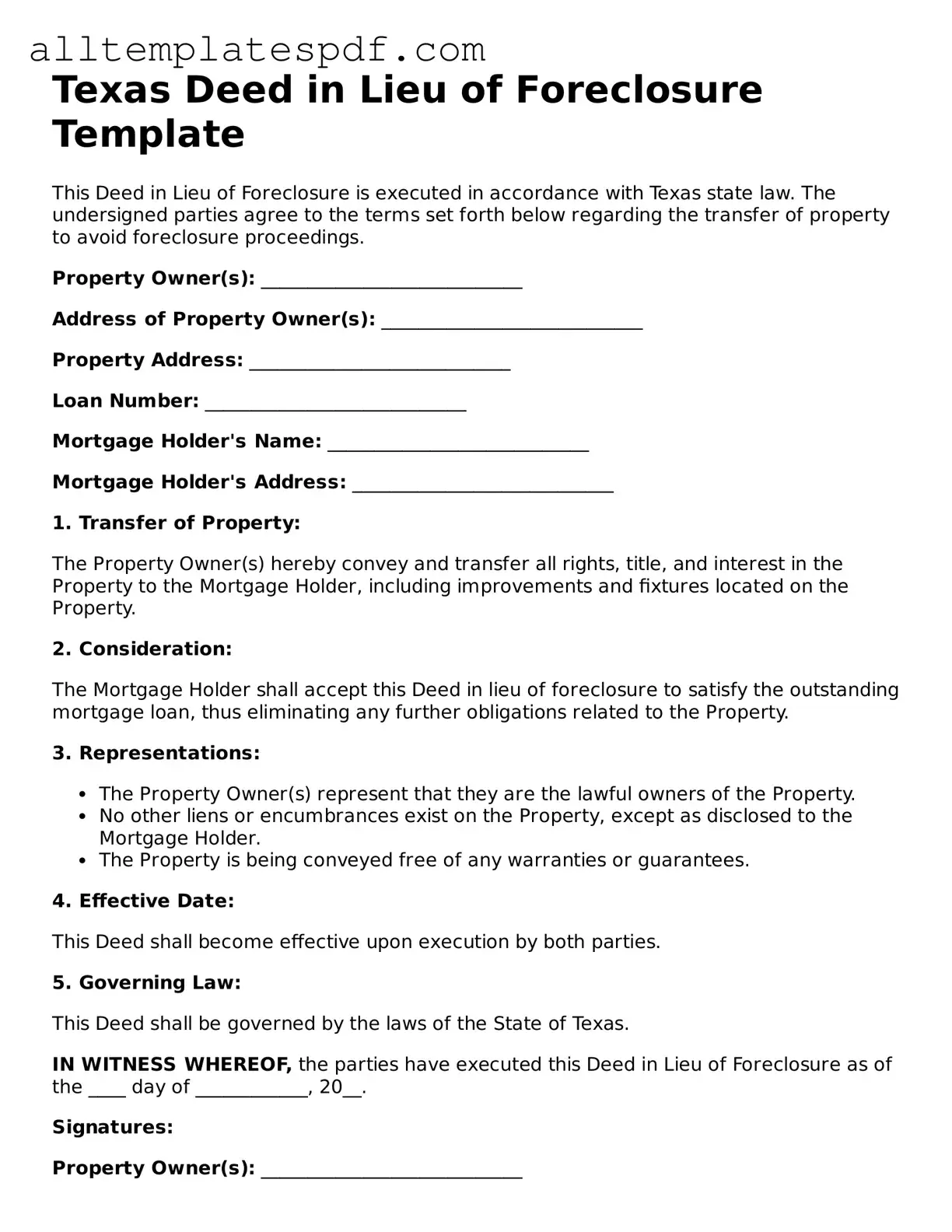Blank Deed in Lieu of Foreclosure Template for the State of Texas
The Texas Deed in Lieu of Foreclosure form is a legal document that allows a homeowner to transfer their property to the lender to avoid the foreclosure process. This option can provide a more efficient and less stressful resolution for those facing financial difficulties. To take the next step, consider filling out the form by clicking the button below.
Open Editor
